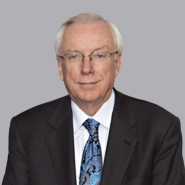COMMENTS ON USPTO INITIATIVES TO ENSURE THE ROBUSTNESS AND RELIABILITY OF PATENT RIGHTS RECEIVED
- February 15, 2023
- Article
- Life Sciences News - February 2023 Newsletter
Associated People
The period for comments on the USPTO initiative is extended to February 28, 2023. The initiative raises issues of particular concern to the life science sector. The initiative was prompted by Executive Order “Promoting Competition in the American Economy,” 86 FR 36987 (July 14, 2021) (Competition E.O.). The E.O. was concerned that the patent system “while incentivizing innovation, does not also unjustifiably delay generic drug and biosimilar competition beyond that reasonably contemplated by applicable law.” This was followed by a letter from Senators Leahy, Blumenthal, Klobuchar, Cornyn, Collins and Braun raising the issue that the large number of patents covering a single product or obvious variants, impede the entry of generic drugs. The Senators raised six questions for rule making or public comment which were included as questions 6 – 11 in the USPTO request for comments along with five from the USPTO, questions 1 – 5.
1. Identify sources of information examiners should be searching;
2. Changes to the continuation practice to include:
a. Explaining where support for each claim limitation is to be found in the specification including negative limitations including in prior filed applications for which benefit of an earlier application is sought.
b. Replacing “or” in 37 CFR 1.75(d) with “and” to make clear that claism must find clear support and antecedent basis.
c. Providing detailed analysis showing support for genus or Markush claims, and requiring applicants to identify each claim limitation that is a genus, and explain or identify the corresponding support in the written description for each species encompassed in the claimed genus.
d. Describing what subject matter is new in continuing applications, including continuations, divisional applications and continuations-in-part.
3. Should the USPTO assign an application to a new examiner once a certain number of RCEs have been filed or. Increasing the scrutiny of the application.
4. Should the USPTO limit or change restriction, divisional, rejoinder, and/or non-statutory double patenting practice.
5. Please provide any other input on any of the proposals listed under initiatives 2(a)-2(i) of the USPTO Letter, or any other suggestions to achieve the aims of fostering innovation, competition, and access to information through robust and reliable patents.
Questions for terminal disclaimers:
6. Eliminating terminal disclaimers.
7. Treating terminal disclaimers such that the patents tied together by the disclaimer rise or fall together.
8. Requiring a second look by a team of patent quality specialists before issuing a continuation patent on a first action.
9. Heightening examination requirements for continuations to ensure minor modifications do not receive a second or subsequent patent.
10. Setting a time limit for when a continuation may be filed during the pendency of the original application.
11. Increasing the filing fees to cover the actual cost of obtaining a patent to discourage filing applications unlikely to succeed.
A copy of the Initiative is here.
The topics presented except for topic 1 are controversial and imply a bias against patenting in the life science field. Copies of the comments received are found here.
Recent Publications
Federal Circuit Holds Prosecution History Disclaimer Applicable to Design Patents
by Sana Tahir, Law Clerk and Andrew Ollis, Partner










 Counseling & Strategic Advice
Counseling & Strategic Advice IP Transactions
IP Transactions Litigation
Litigation PTAB Proceedings
PTAB Proceedings Technology Transfer
Technology Transfer Trademark & Designs
Trademark & Designs U.S. Patent Procurement (Application Drafting & Prosecution)
U.S. Patent Procurement (Application Drafting & Prosecution)








